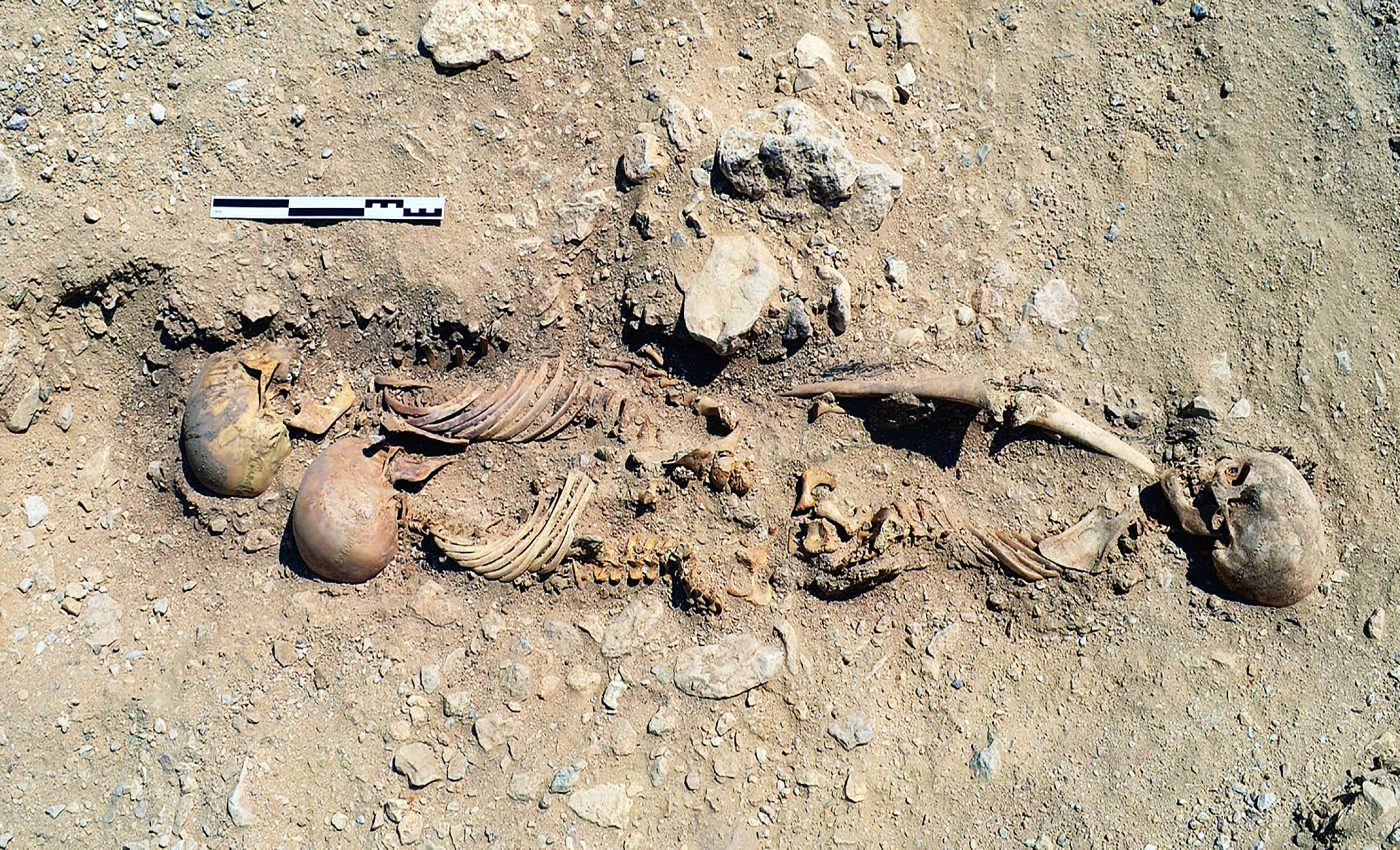
Archaeologists debunk one of the greatest myths of Ancient Egypt
A new study argues the oft-repeated “plague of Akhetaten” likely never struck the city itself. Researchers compared local burials, city life, and population patterns to what real epidemic-hit places look like.
The scale is not small. Four city cemeteries hold roughly 11,350 to 12,950 people, and hundreds of graves were examined in detail.
Those cemeteries were excavated between 2005 and 2022, giving a close look at how ordinary people were buried.
Studying the Akhetaten plague
Lead bioarchaeologist Gretchen R. Dabbs of Southern Illinois University Carbondale (SIU) co-authored the analysis.
The project pulls together burial data, settlement evidence, and population modeling from Akhetaten, better known today as Amarna.
“We conclude that when the evidence is considered as a whole, there is little to currently suggest Akhetaten was affected by a mortal epidemic,” wrote Dabbs.
The team looked for classic crisis signs and did not find them. They saw ordinary burials, careful wrapping, and grave goods placed with care rather than rushed disposals.
Texts from the wider region mention disease, including the Hittite “plague prayers” and several letters in the Amarna archive. Yet none point to a lethal plague outbreak inside Akhetaten itself.
The new assessment weighs those writings against local ground truth. It keeps the texts in view but checks them against what the city’s archaeology actually shows on the spot.
What the cemeteries reveal
Most graves are single pit burials with textile shrouds and mat “coffins.” Bodies were not tossed in at random, and burial positions are typically orderly.
Multiple burials do appear, especially in one northern cemetery, but who is buried with whom matters. Adult women are often interred with children, a pattern that looks intentional rather than emergency triage.
In that northern cemetery, a very high share of the dead are between about 5 and 25 years old. That is unusual for a normal town cemetery and suggests a restricted group rather than a cross-section of the whole city.
A field photograph shows a triple burial from the North Tombs Cemetery, but context is key. The same area also records signs of heavy labor on the skeletons, pointing to a young workforce under strain.
Searching for Akhetaten plague
The study leans on bioarchaeology, the study of human remains from archaeological sites, to separate hard evidence from rumor.
It checks for changes in how people were buried, and for cemetery clusters that would mark a sudden spike in deaths.
Researchers also consider paleopathology, the study of disease in ancient bones, which rarely captures fast-moving infections. Many lethal microbes leave little or no trace on skeletons, especially if death follows quickly.

“Mass grave” idea falls short
Large catastrophic pits are not the rule at Amarna. Where several people share one grave, the combinations are patterned, often linking women and children.
That pairing, repeated across sites, implies caregiving bonds at death. It reads like culture, not chaos.
Across the cemeteries, people carry linear enamel hypoplasia, grooves in tooth enamel from childhood stress.
They also show spinal trauma and degenerative joint disease, long-term wear in joints from heavy use. These signals point to hard lives. They do not point to a runaway contagion.
The team used paleodemography, estimating past population structures from burials, to check how many people should have died in a city this size over about two decades. The expected number and the observed number line up.
That match matters. A true mass-mortality year would create a sharp bulge in the count, and the cemeteries do not show it.
Aftermath of an epidemic
When epidemics really hammer a city, normal systems often crack. Burials get rushed, pits get bigger, buildings stall, and people leave without their things.
Akhetaten’s traces tell a different story. Burials were methodical, and city life shows remodeling and ongoing activity during the years the city was used.
The capital did not vanish overnight. It shrank as royal policy shifted after the Akhenaten plague, and some people stayed on for years.
That slow fade fits the archaeological record. It does not fit the picture of a city collapsing under a sudden fatal wave.
Closer look at the northern cemetery
One northern burial ground stands out for youth-heavy deaths and many shared graves. It likely served a workforce rather than the whole city.
Its skeletons show high workloads. Add stress and poor diet, and you get a dangerous mix without needing a single killer pathogen.
The Hittite prayers and diplomatic letters describe disease in the Late Bronze Age world. They still matter, and they set the regional background.
Still, local context is king. At Akhetaten, the ground evidence does not confirm a lethal outbreak in the city.
Lessons from the Akhetaten plague
Archaeologists track taphonomy, the changes to remains after death, because disorder caused by decay can mimic careless burial.
They also think in terms of syndemic, linked health problems that worsen each other, which fits the city’s mix of work stress and undernutrition.
Those concepts help explain why hard lives can raise mortality without a single catastrophic disease event. They also explain why rumors of plague can linger.
Royal deaths cluster in the historical record, and fearsome deities of disease are prominent in art.
Those threads are easy to knot into a single tidy tale. Repetition then hardens the guess into “fact.” The new work puts that story back on evidence.
Evidence from graves, bones, and city layers agrees. Akhetaten reads like a stressed but functioning city, not a community cut down by a lethal epidemic.
The case is a reminder to test big stories against local data. It shows how science rewrites old narratives without drama or hype.
The study is published in the American Journal of Archaeology.
—–
Like what you read? Subscribe to our newsletter for engaging articles, exclusive content, and the latest updates.
Check us out on EarthSnap, a free app brought to you by Eric Ralls and Earth.com.
—–













